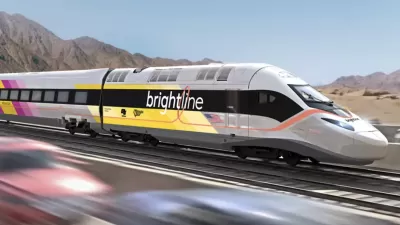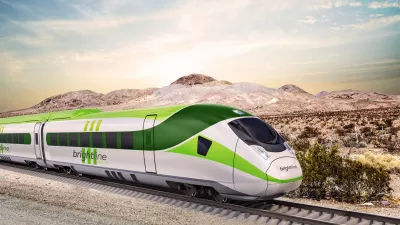In an age of rapid technological improvements in almost every aspect of life, it's difficult to understand how a technology like trains could actually be less advanced now than it was in the 1940s, writes Tom Vanderbilt.
"There is at least one technology in America...that is worse now than it was in the early 20th century: the train.
[Prewar train timetables show that] the Montreal Limited, circa 1942, would pull out of New York's Grand Central Station at 11:15 p.m., arriving at Montreal's (now defunct) Windsor Station at 8:25 a.m., a little more than nine hours later. To make that journey today, from New York's Penn Station on the Adirondack, requires a nearly 12-hour ride. The trip from Chicago to Minneapolis via the Olympian Hiawatha in the 1950s took about four and a half hours; today, via Amtrak's Empire Builder, the journey is more than eight hours. Going from Brattleboro, Vt., to New York City on the Boston and Maine Railroad's Washingtonian took less than five hours in 1938; today, Amtrak's Vermonter (the only option) takes six hours-if it's on time, which it isn't, nearly 75 percent of the time.
[President] Obama's bold vision [for high-speed rail] obscures a simple fact: 220 mph would be phenomenal, but we would also do well to simply get trains back up to the speeds they traveled during the Harding administration."
FULL STORY: Stop This Train!

Alabama: Trump Terminates Settlements for Black Communities Harmed By Raw Sewage
Trump deemed the landmark civil rights agreement “illegal DEI and environmental justice policy.”

Study: Maui’s Plan to Convert Vacation Rentals to Long-Term Housing Could Cause Nearly $1 Billion Economic Loss
The plan would reduce visitor accommodation by 25% resulting in 1,900 jobs lost.

Why Should We Subsidize Public Transportation?
Many public transit agencies face financial stress due to rising costs, declining fare revenue, and declining subsidies. Transit advocates must provide a strong business case for increasing public transit funding.

Paris Bike Boom Leads to Steep Drop in Air Pollution
The French city’s air quality has improved dramatically in the past 20 years, coinciding with a growth in cycling.

Why Housing Costs More to Build in California Than in Texas
Hard costs like labor and materials combined with ‘soft’ costs such as permitting make building in the San Francisco Bay Area almost three times as costly as in Texas cities.

San Diego County Sees a Rise in Urban Coyotes
San Diego County experiences a rise in urban coyotes, as sightings become prevalent throughout its urban neighbourhoods and surrounding areas.
Urban Design for Planners 1: Software Tools
This six-course series explores essential urban design concepts using open source software and equips planners with the tools they need to participate fully in the urban design process.
Planning for Universal Design
Learn the tools for implementing Universal Design in planning regulations.
Smith Gee Studio
Alamo Area Metropolitan Planning Organization
City of Santa Clarita
Institute for Housing and Urban Development Studies (IHS)
City of Grandview
Harvard GSD Executive Education
Toledo-Lucas County Plan Commissions
Salt Lake City
NYU Wagner Graduate School of Public Service





























